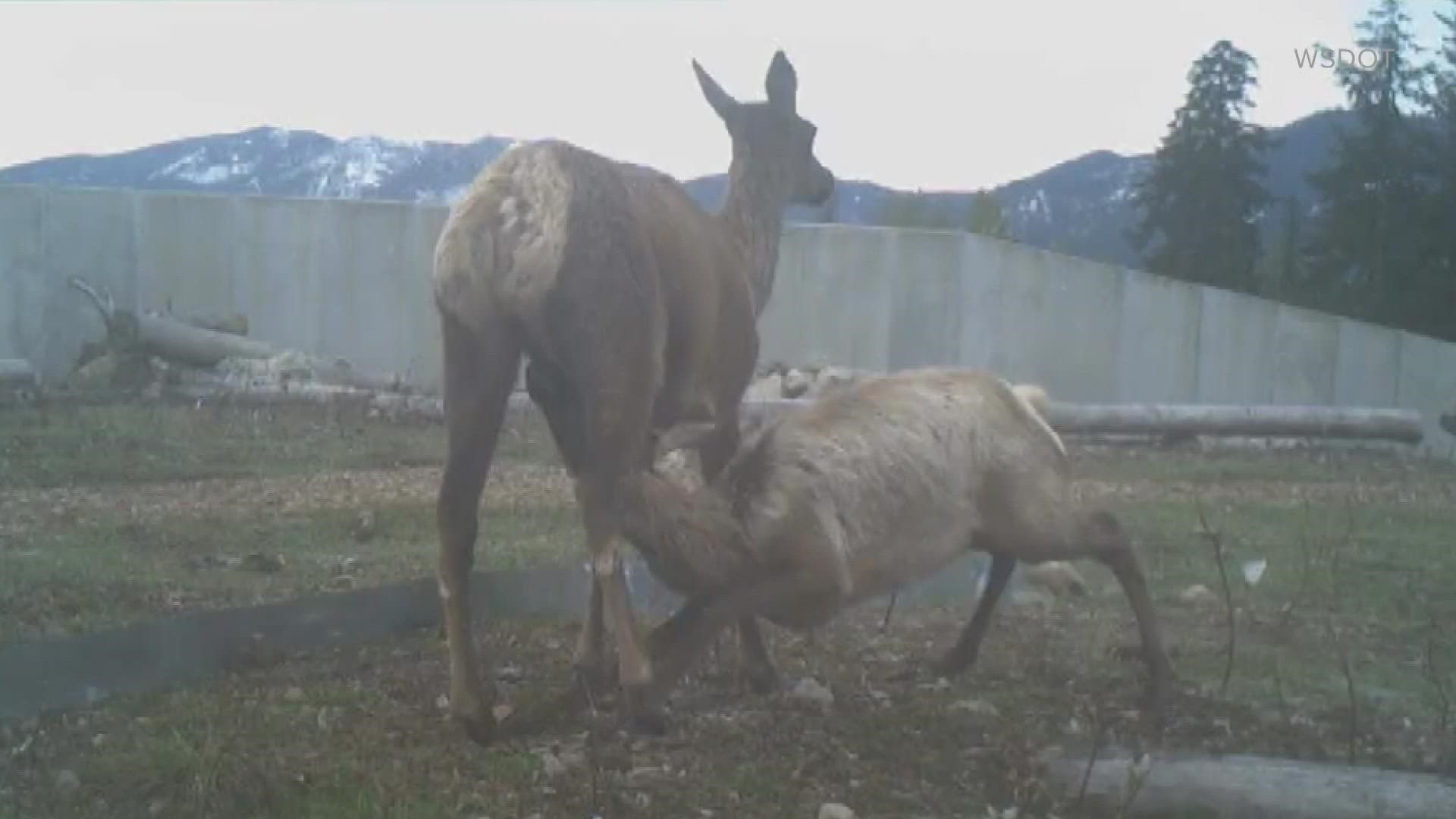SNOQUALMIE PASS, Wash. — The wildlife crossing along I-90 has seen some major traffic this summer.
“It's really great to see wildlife using it. We've captured different varieties of wildlife, including bobcats, coyotes, elk and deer,” said Meagan Lott, Communications Manager for Washington Department of Transportation.
WSDOT Snoqualmie Pass released a new video this week showing a herd of 55 elk, a rare sighting of a black bear using the crossing and a nursing elk calf.
“We're essentially trying to make safe passage for wildlife from the coast to the BC Rockies,” said Andrea Wolf-Buck, Communications Director for Conservation Northwest.
Conservation Northwest has been working with WSDOT for years on wildlife connectivity, and said I-90 is a huge barrier.
“So much work goes in at the front end and then you see those videos that WSDOT just showed and it shows how important it is to invest in these projects,” said Wolf-Buck.
Even more will soon be coming as part of WSDOT’s nearly $1 billion, 15-mile improvement project on I-90 between Hyak and Easton.
A second overcrossing is planned near Easton, plus an undercrossing along Hudson Creek.
“These wildlife crossings have been strategically placed in areas where we know there are natural migration patterns,” said Lott.
Those are expected to be done in the next two years, plus 15 more wildlife structures.
These crossings are put in place after hundreds of car crashes involving wildlife.
“If you're going 70 miles an hour and you hit a deer. It's not, it's not gonna end well,” said Lott.
The state recently invested more money into a similar project along Highway 97, that Wolf-Buck said has reduced collisions by 91% since August 2020.
Conservation Northwest is hoping for more state and federal funding.
“We have big dreams for the I-5 corridor. If you've ever driven through Olympia to the coast, you see all these beautiful trees and imagine wildlife trying to cross over those highways,” said Wolf-Buck.
WSDOT has seen 4,000 types of wildlife with its thermal cameras since monitoring the first crossing put in place in 2015.
Wolf-buck said investing in wildlife connectivity now is crucial as animals are now navigating a changing climate.
“Their habitat changes as climate changes and they need to be able to move to the area that best suits what they need,” said Wolf-Buck.

